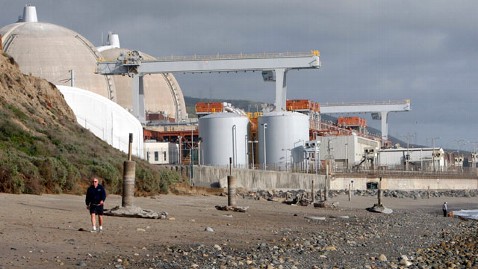Environment & Energy
Related: About this forumEdison wants to restart one of San Onofre's nuclear reactors

"Southern California Edison wants to restart one of the two reactors at its San Onofre nuclear plant, which has been shuttered for eight months over safety concerns, officials said Thursday.
The plant's Unit 2 reactor was offline for routine inspections and maintenance when a steam generator tube in Unit 3 sprung a leak on Jan. 31, releasing a small amount of radioactive steam. That led to the discovery that the tubes in the newly replaced steam generators were wearing out more quickly than expected, including some that showed an unusual type of wear caused by tubes rubbing against adjacent tubes.
<>
'Safety is our top priority, and after conducting more than 170,000 inspections to understand and prevent the problem, and confirming the corrective actions we have taken to solve the problem with the top experts from around the world, we have concluded that Unit 2 at San Onofre can be operated safely and within industry norms,' SCE President Ron Litzinger said in a statement. 'When implemented, this plan will get San Onofre Unit 2 back to providing reliable and clean energy to Southern Californians.'”
http://latimesblogs.latimes.com/lanow/2012/10/san-onofre-restart-plan.html
AndyTiedye
(23,500 posts)If it's still operating when the big one hits ![]()
![]()
Let's take a few easy points:
1) The expected sites for "The big one" aren't close to the plant
2) The type of faults along California do not produce tsunami anywhere near the size of what Japan gets (try looking up the worst tsunamis in CA history). Yet SONGS' sea wall and siting are at less risk even if it happened.
3) Fukushima withstood the earthquake with little damage (it was the tsunami that caused the crisis), and SONGS was designed for a significantly larger amount of ground motion than Fukushima was (even though the "big one" would almost certainly be smaller at SONGS).
4) The generators there aren't vulnerable to flooding
And even if all of that went wrong and there was a meltdown?
5) SONGS is a much newer design with even better containment (and associated safety systems)
6) SD/LA are 45-60 miles away.
AndyTiedye
(23,500 posts)"I personally saw pipes that had come apart and I assume that there were many more that had been broken throughout the plant. There's no doubt that the earthquake did a lot of damage inside the plant... I also saw that part of the wall of the turbine building for reactor one had come away. That crack might have affected the reactor."
The reactor walls are quite fragile, he notes: "If the walls are too rigid, they can crack under the slightest pressure from inside so they have to be breakable because if the pressure is kept inside... it can damage the equipment inside so it needs to be allowed to escape. It's designed to give during a crisis, if not it could be worse – that might be shocking to others, but to us it's common sense." Worker B, a technician in his late 30s who was also on site at the time of the earthquake, recalls: "It felt like the earthquake hit in two waves, the first impact was so intense you could see the building shaking, the pipes buckling, and within minutes I saw pipes bursting. Some fell off the wall...
"Someone yelled that we all needed to evacuate. But I was severely alarmed because as I was leaving I was told and I could see that several pipes had cracked open, including what I believe were cold water supply pipes. That would mean that coolant couldn't get to the reactor core. If you can't sufficiently get the coolant to the core, it melts down. You don't have to have to be a nuclear scientist to figure that out." As he was heading to his car, he could see that the walls of the reactor one building had started to collapse. "There were holes in them. In the first few minutes, no one was thinking about a tsunami. We were thinking about survival."
The suspicion that the earthquake caused severe damage to the reactors is strengthened by reports that radiation leaked from the plant minutes later. The Bloomberg news agency has reported that a radiation alarm went off about a mile from the plant at 3.29pm, before the tsunami hit.
http://www.independent.co.uk/news/world/asia/the-explosive-truth-behind-fukushimas-meltdown-2338819.html
FBaggins
(26,756 posts)There hasn't been anything identified that could have caused a meltdown. The gap between the release that would set off a radiation alarm and damage that could cause a meltdown is huge. (and, of course, the pumps kept working for the time between the earthquake and the tsunami).
But I can save you lots of time trying to debate it. Other's have tried that spin (that it wasn't really the tsunami and loss of generators that caused the crisis, it was the earthquake). They always start with these un-sourced quotes from people who clearly have no expertise. We play around for a few posts and then it always comes down to a simple question that they never answer... and drop the conversation. So let's just jump to the end, shall we?
Quite a number of reactors in Japan had similar (or greater) ground movement (relative to their design basis) from this quake or a previous one (95, 99, 2005, 2007). Fukushima wasn't even the closest plant to this earthquake. Why is it that all three of the units that lost backup generation melted down yet not a single one of the other units sustained any damage like the anonymous "workers" above claim to have seen? Units 5&6 are right there on the same property. Why didn't the pipes buckle there?
Just a really odd coincidence?